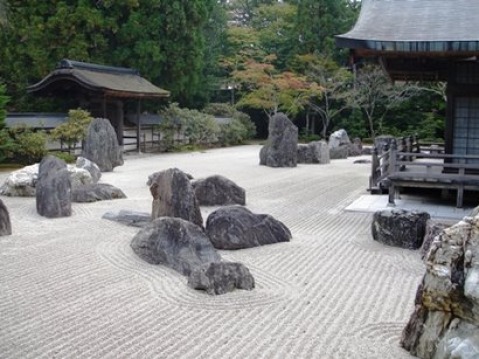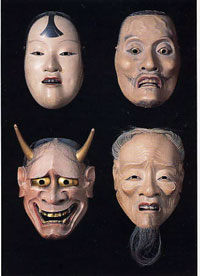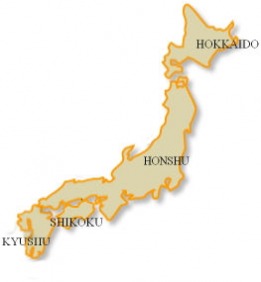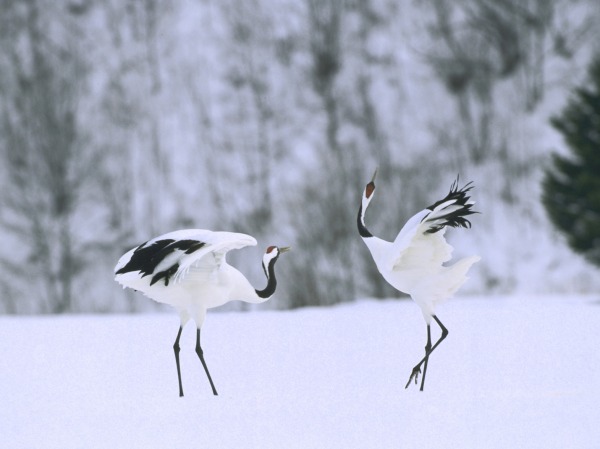
こんにちは! Konnichiwa! Hello! Welcome to Japan!
Vocabulary
clans - extended families
Shinto - traditional religion of Japan
regent - person who rules a country for someone who is unable to rule alone
court - a group of nobles who live near and serve or advise a ruler
figurehead - person who appears to rule even though real power rests with someone else
Important People
Prince Shotoku - (573-621) One of Japan's greatest leaders; regent for his aunt since he was 20 years old; helped bring Buddhism, Confucianism, and Chinese ideas to Japan;
Lady Murasaki Shikibu (c.078-c.1026) - Japanese noble and writer; wrote Tale of Genji, which was the world's first novel
Japan's islands are made up of the tops undersea mountains and volcanoes. Because of this, only twenty percent of the land is flat, and all of this land is located along the coast. Being made up of islands, Japan created it's own culture and social structure, though they still traded goods and ideas with other parts of Asia, including China and Korea. (A man named Commodore Perry forced Japan to open its doors to the outside world. If not for him, it would have been many years before Japan got ideas or goods from other parts of the world, like China and Korea.)
Geography
There are four main islands in Japan, Hokkaido, Honshu, Shikoku, and Kyushu. They are surrounded by the Pacific Ocean on the east and north, Sea of Japan on the west, and East China Sea on the south. At 12,388 feet tall, Mount Fuji is the largest mountain (dormant volcano) in Japan, and is often depicted in pictures and movies.
Religion

Even though Japan was isolated, they still managed to introduce other country's ideas into their own culture, mainly through Prince Shotoku. One of the things they got from China was Confucianism. The Japanese soon began respecting their elders and discovering the importance of family. Another religion was Buddhism. As Prince Shotoku was a Buddhist himself, he was sure to spread this religion to all of Japan. He had a big Buddhist temple that still stands today. Within the different Japanese islands, different forms of religions began popping up. Like Pure Land Buddhism, for example. But the most common was known as Zen. This focused on self-discipline and meditation. Zen gardens were built in Japan, like the one above, with raked gravel and rocks arranged to look like mountains. Here people, especially warriors, would meditate and clear their soul.
Before ideas came from China, Japan's main religion was Shinto. This taught that everything in nature has kami - this includes the sun, moon, water, trees, basically everything else in nature. These nature spirits were supposed to help people live and protect them from harm. Emperors built shrines and held ceremonies, hoping the kami would bless them. The most powerful kami was the goddess of the sun, and early people of Japan believed that they were all descended from her. This was part of the original religion of Japan, but it was overtaken by Confucianism and Buddhism.
Bushido
Bushido was the code of rules that samurai had to follow. The name means "the way of the warrior". This taught them to lead simple, disciplined lives. Many set up intricate flower arrangements, while others held tea ceremonies or grew miniature bonsai trees in gardens. As fighters, they had to brave and honorable, but most of all, to be loyal to their lord. He had to serve his master without hesitation, and his orders came before the safety of his own family. If he failed a battle or disobeyed an order, he would perform seppuku. This was a form of suicide used only by samurai warriors. To protect one's honor, he would stab himself with a knife and slice his stomach from left to right, cutting out his guts. The he would stretch out his head and allow another samurai, usually a friend, to slice his head off. Eww...Not pretty. This, however, was more desirable than bringing shame to the family name.
Achievements

Fashion - Women wore magnificent silk robes with up to twelve layers, all laid out to show all of them at once; they also held fans painted with flowers, trees, and birds
Literature - many written by women; diaries and journals; excellent word choice; The Tale of Genji by Murasaki Shikibu; poetry by men and women
Visual Art - bright, bold paintings that illustrated stories; calligraphy to write poems
Architecture - copied Chinese building structure; surrounded by gardens and ponds
Performing Arts - musicians, jugglers, acrobats; Noh-combined music, speech, and dance
Economy
The people of Japan relied on the ocean for their food. Since everyone lived by the coast, people always sold seafood in the markets. The ate eel, shark, octopus, seaweed, fish, and other things. Because of the lack of diversity, they learned to prepare their food many different ways.
Since they were located on islands, they came up with their own culture. As time went on, they borrowed ideas from China and Korea, but that was about it.
Social Structure
Emperor - figurehead; follows orders from shogun
Shogun - powerful military leader; ruled in emperor's name
Court - Group of nobles who surround a ruler
Daimyo - large landowners who led armies of samurai
Samurai - trained professional warriors who served shogun; means "to serve"; fought with swords and bows
Peasants - working class who had no power; most of population
Compare & Contrast - Knights vs. Samurai
Even though Europe and Japan are on either sides of Asia, they still both developed something known as the feudal system. They both involved cooperation between social classes. There was a fighting class, knights or samurai, and the vassals, lords or daimyo. In Europe, the social order was king, lord, lesser lords, knights, peasants, and serfs. In Japan, it was emperor (though he had almost no power), shogun, daimyo, samurai, and peasants. The main differences were between the knights and samurai. For example, the knights had to follow the Code of Chivalry, which taught them to be honest and have mercy. Samurai did everything for honor, as explained in Bushido, above. Their armor was also different. The knights wore either chain mail or plate armor, which were both extremely heavy. Samurai wore kimonos underneath, then a lighter armor made of plates that was held together with leather. Along with their armor, they used different weapons. Knights most commonly used the sword, with a cross guard, hilt, and pommel; or the lance, which was a wooden pole with a metal tip. Samurai used more elaborate and beautiful weapons. One of these was the katana, known to every samurai. They also owned a wakizashi, which was a shorter version of the katana that used used indoors. The shuriken was a dagger that could be held in the palm, and thrown with a spin to hit it's opponent. Despite all of these differences, knights and samurai still had many similarities. They both had trained since boyhood to become warriors; had a high respected role in society; had a code of honor; fought for vassals; were rewarded mostly with land.
If you're really into Japanese culture, one of the things you can do is go translate your name to Japanese!
Simply type your name in and choose your font, and then see your name in kanji! You can scroll down the page to learn more about the Japanese language. Enjoy!
Animal of the Day: So, like China, Ancient Japan didn't use the Japanese Crane for anything, but they're just beautiful birds. They probably weren't even in Japan at the time, but this is a great picture anyway!



